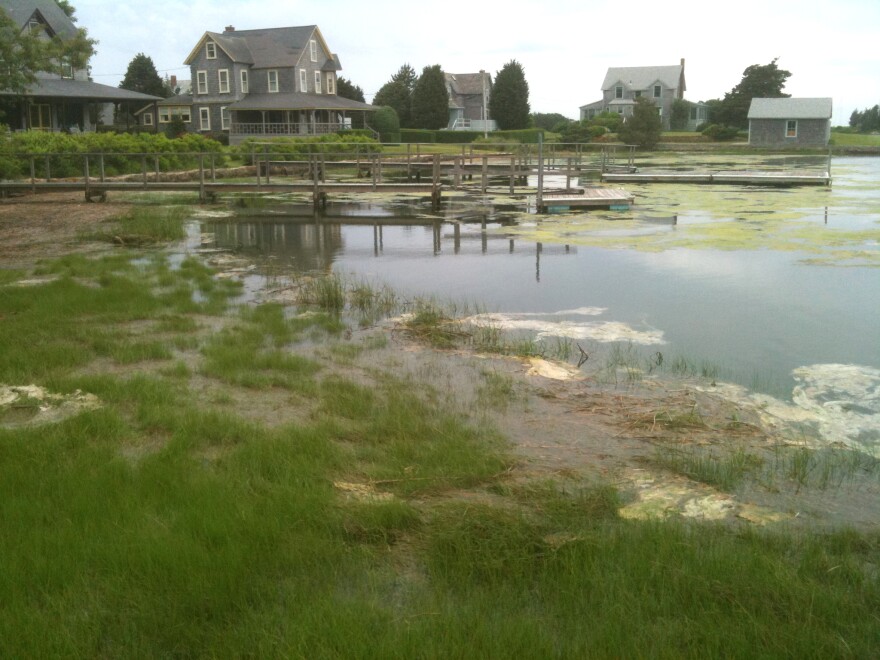Overdevelopment, climate change, and outdated wastewater infrastructure around Buzzards Bay have contributed to a decline in water quality, according to the Buzzards Bay Coalition.
Since 1992, the coalition has relied on volunteers and scientists at the Marine Biological Laboratory to collect water samples and measure the water’s temperature, salinity, nitrogen levels, and more. Those factors are then combined, and water quality is measured on the Bay Health Index, which scores harbors, coves, and rivers on a scale from 0-100, or from degraded to pristine.
“Around Buzzards Bay, we actually have waters that span pretty much that whole spectrum,” said Rachel Jakuba, science director at the coalition.
Overall, area waterways experienced slight declines in water quality in 2019. In fact, 16 percent were found in “poor” health, a rise from past years.
That classification reflects an increase in nitrogen pollution and a decrease in visibility, oxygen, and other markers that help plants and fish survive. But one important factor to explain the decline involves a testing condition. In July, 2019, the coalition’s volunteers collected water samples immediately after a rainstorm washed pollutants into the bay.
“Large rainfalls tend to wash nitrogen off of the landscape,” Jakuba said. “So in that sampling … we captured the increased nitrogen pollution that had run off into Buzzards Bay.”
Across the region, nitrogen is primarily released into the environment through lawn fertilizers and outdated septic tanks that fail to prevent chemicals from seeping through the groundwater.
Now, nitrogen loading is only increasing, and one consequence will be more algae blooms that threaten the survival of fish, shellfish, and crucial bay plants like seagrass.
“So seagrass … is a nursery ground for a lot of important recreational and commercial fish species,” Jakuba said. “And that is a rooted plant that requires sunlight penetrating in. If the waters have dense algae blooms and are murky, the sunlight can’t get through to the plants and the plants can’t get enough sunlight to photosynthesize and … survive.”
Also, climate change, Jakuba warned, will only make the problem worse.
“Heavy rainstorms are predicted to happen more frequently and of greater intensity as climate change happens,” she said. “And so events that drive a lot of nitrogen into the water at once are expected to happen more.”
But she said people shouldn't be afraid to swim just yet. About 37 percent of the water in Buzzards Bay is considered “good,” with healthy conditions for fish and shellfish and visibility greater than six feet. Another 47 percent of waterways are deemed “fair.”








